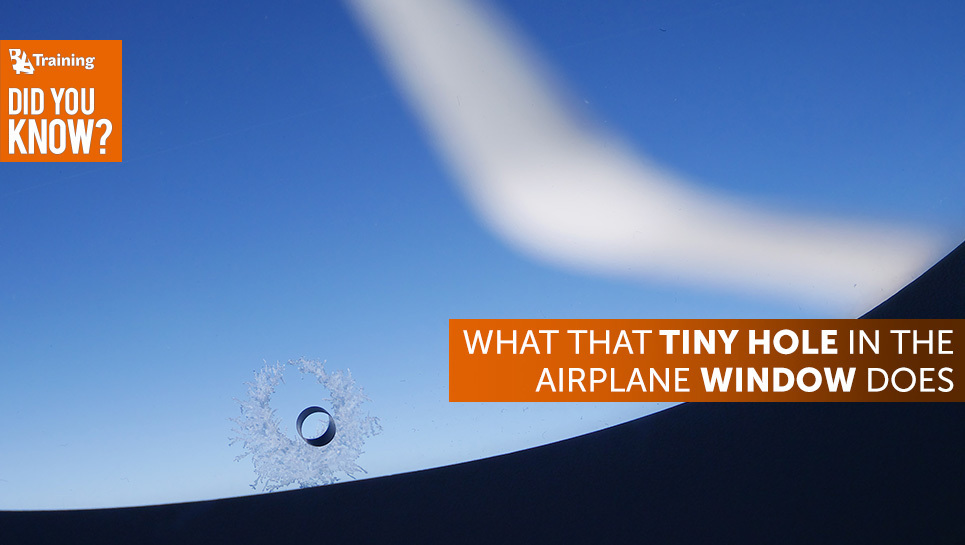If you’ve ever had a window seat on a flight, you have probably noticed a tiny hole at the bottom of the window.
Every single window of the plane has the same tiny hole and actually, it is a very important safety feature.
Why is it so important?
Air pressure drops as you get higher. Anyone who has climbed mountains knows, at high altitude the air is less pressurised and contains less oxygen. And that’s only the height of a mountain. The plane gets much higher, where the air pressure drops much lower.
Airplanes are designed to maintain air pressure at a safe level inside the cabin. So the air pressure outside an airplane is much lower than it is inside. As this difference in air pressure puts a lot of physical stress on the airplane window, its construction is special.
Most airplane windows are made up of three panels of acrylic, so when you look through the plane window, you are actually peering through three different panes. The exterior window works for keeping the elements out and maintaining cabin pressure. If something happens to the exterior pane, the second pane acts as a fail-safe option.
The tiny hole is in the middle one and is called the “bleed hole”. Its primary purpose is to balance air pressure. There’s a small gap between the middle and the outer panes. The “bleed hole” allows pressure to balance between the passenger cabin and the air gap.
The “bleed hole” plays an important role in keeping us safe, it also helps keep the window panes from fogging up or frosting over – the result of the temperature difference between the inside and the outside of the cabin – allowing us to stare out into the clouds. After all, half the fun of an airplane ride is the in-flight scenery shots, isn‘t it?
Who knew that something so simple could be so important?
So now you know. Go ahead, and impress your fellow passengers with your knowledge.








